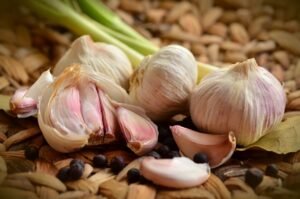Bell peppers
Which Is The Best Way To Grow Bell Peppers?
Learning the basics of growing bell peppers may seem daunting to the budding grower, but if you know a few key facts before you start, peppers are easy enough to grow if the weather is playing. Learn everything from sowing seeds to replanting seedlings and caring for plants so that you can grow and enjoy this beauty in your garden. With good soil, adequate temperature, and some pepper maintenance, pepper is a simple and satisfying garden project even if you are planting your first garden.

Bell peppers are a not only attractive but very useful addition to the garden. Their reputation for being difficult to grow stems from the lack of attention to these plants. Also known as bell peppers or bell peppers, with the right care you will find an abundance of rich green leaves and bell peppers. There are several plants in the garden that are more suitable than peppers, one of many varieties of peppers that fall under the scientific name Capsicum annuum.
The rich green leaves, compact shape, and vibrant fruits make them a worthy competitor for even the most formal gardens. Many of the plants we usually call vegetables are actually fruits, including bell peppers and hot peppers, for the simple reason that they carry seeds. bell peppers are easy to grow in any sunny, well-drained area and are also good candidates for oversized containers.
Bell peppers are ideal for growing in pots and garden beds so you can easily place them in even the smallest places. Since these vegetables (well, fruits) require good drainage, a raised bedding bed – like this one from Back to the Roots – is a wonderful and affordable home for your pepper plant.
The best place to start is in the perfect pepper spot, which is vital if you are in one of the hottest regions of the planet, except when there are temperatures above 85 degrees Fahrenheit.
In flower beds or rows, the optimal spacing for most pepper plants is 18-24 inches (see label for exceptions). Peppers grow best in soils with a pH of 6.2 to 7.0, although they can tolerate weakly alkaline conditions around 7.5. Be sure to put a few inches of mulch around each pepper plant to keep the soil cool and moist.
If you plan to plant single plants, add about 2 flat tablespoons of fertilizer to the soil at the planting site; do not let the pepper plants wither as this will reduce the yield and quality of the fruit; after the first fruit begins to grow, apply about 2 tablespoons of fertilizer around each plant, about 6 inches from the stem.
Support pepper plants with a stake or cage; fruit plants may break or fall off due to high temperatures and wind, flowers may fall off and plants may not bear fruit, if the ice conditions either kill the plants completely or inhale the growth of the pepper, leaving bare plants.
Don’t stress your plants because of water shortages, as pepper plants love a moist environment. Also, avoid flooding or overwatering the soil in your garden because peppers do not adapt well to wet soil. Plant in an area with well-drained soil and direct sunlight for at least six to eight hours a day. These related plants are vulnerable to the same diseases that can remain in the soil.
If growing in pots or containers, replace the soil annually if diseases are present. Pepper plants are prone to flower rot, a condition in which the ends of vegetables turn black due to a lack of calcium. Combat this by adding calcium pellets to the soil at the time of planting and then as often as prescribed by the particular brand of calcium that you purchase.
From the well-known fact that water is essential for growing peppers, choosing the right soil is undoubtedly the best way to ensure optimal moisture levels since these plants don’t like wet feet, choosing sandy, loamy soil will provide good drainage and will help the soil temperature rise faster, which is a key factor when growing peppers.
Sun-loving peppers need at least six hours of full sun a day, although more is desirable, as will a shady backyard or covered patio giving you disappointing results, as will growing peppers indoors with lighting. Yes, you can grow leftover peppers of inferior quality (such as poor taste and energy) than peppers grown from local seeds or commercial seed stores. However, if the pepper chunks are grown from pollinated or family pepper seeds, you can grow large quantities of quality peppers.
Unlike their spicy counterparts, peppers do not contain capsaicin – which gives hot peppers like jalapenos their pungency and heat, this variety also has a long fruiting season which gives you plenty of time to enjoy its bright orange fruit – in fact, it helps them to channel their energy into growth so they get a lot of large fruits later in the season (and a higher overall yield) than a few small fruits at the beginning.
You can pick peppers at an unripe stage of green or purple, but the taste is sweeter if you wait until they are ripe, usually red, but sometimes golden yellow or orange. After about a week or three, you will begin to notice the spawning of the pepper. To find out what color should be ripe peppers, check the plant label to find out what color they should be.








This article was very I formative and helpful.